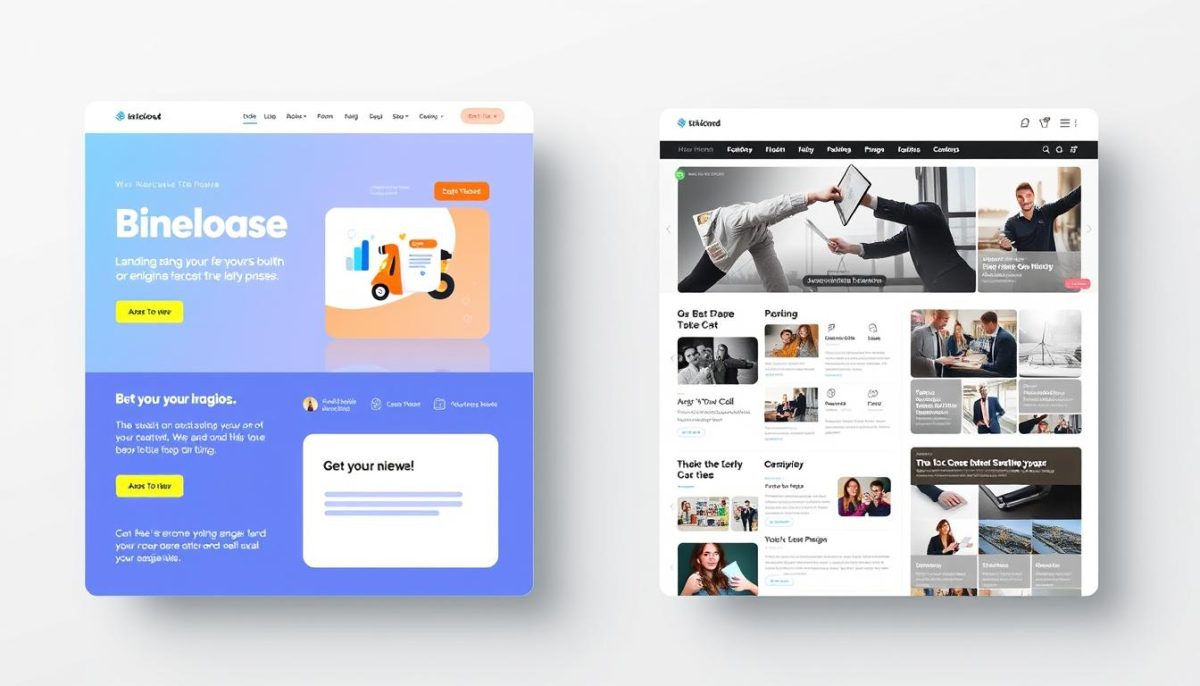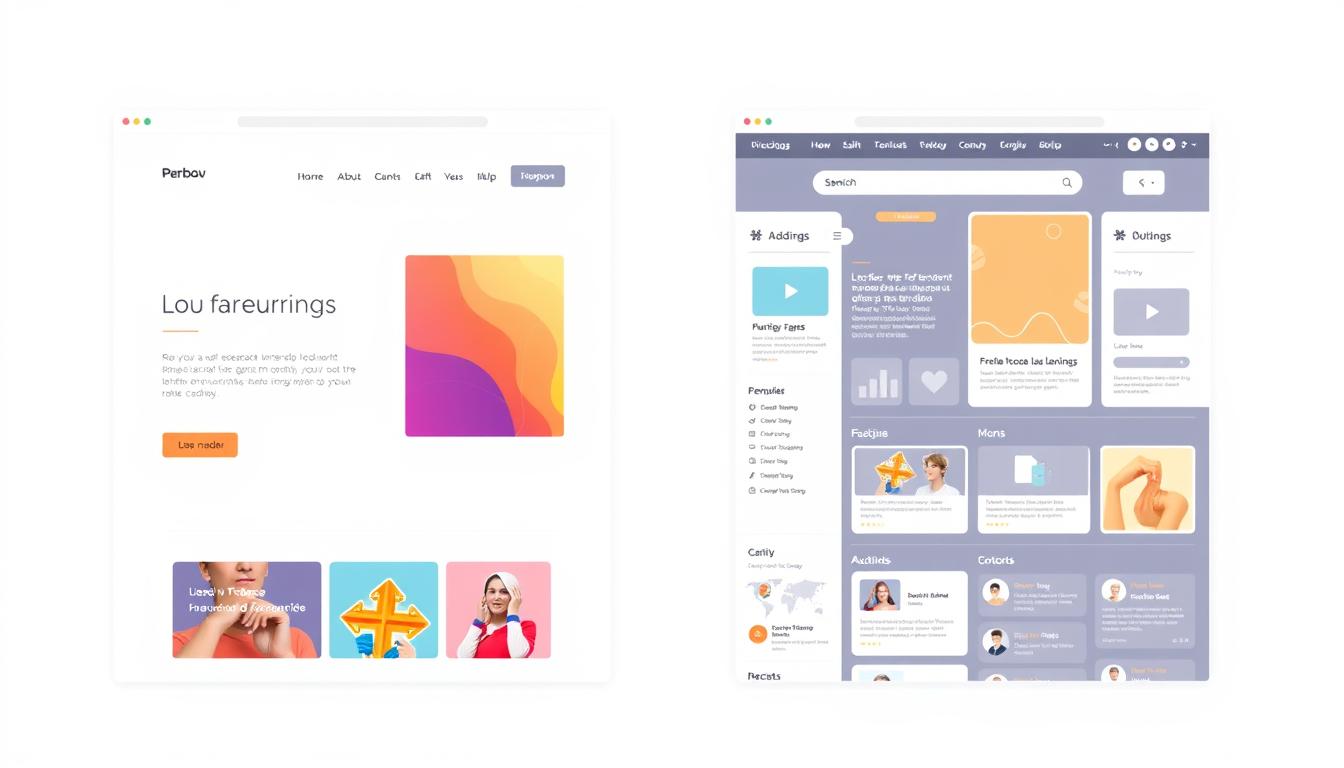In the realm of digital marketing, understanding the distinction between a landing page and a homepage is crucial for businesses looking to enhance user engagement and optimize web design. Both serve unique purposes but are often confused due to their overlapping features. This comprehensive comparison will shed light on how each page type contributes to the overall effectiveness of a website. By monitoring trends in user behavior and conversion rates, companies can tailor their strategies to achieve better results in the digital landscape.
Understanding the Basics of Landing Pages and Homepages
Grasping the fundamentals of web pages is essential for anyone delving into digital marketing. The terms “landing page” and “homepage” pertain to different types of web pages, each serving unique purposes within a marketing strategy. Understanding their definitions and functions contributes significantly to effective online presence and customer engagement.
What is a Landing Page?
A landing page refers to a standalone web page built specifically for a marketing campaign. Its primary goal is to convert visitors into leads or customers by prompting them to take a specific action, such as signing up for a newsletter, making a purchase, or downloading content. The definition of landing page emphasizes its targeted design and optimization for enhanced conversion rates. Successful landing pages often employ compelling headlines, clear calls to action, and engaging visuals to direct visitor behavior.
What is a Homepage?
A homepage serves as the main entry point for a website, providing an overview and navigation to other web pages. This definition of homepage highlights its role as a digital gateway, introducing visitors to the brand while guiding them to various sections and content within the site. Well-designed homepages incorporate essential elements, such as brand identity, navigation menus, and key information that encourages further exploration of the website.
| Feature | Landing Page | Homepage |
|---|---|---|
| Primary Goal | Convert visitors into leads/customers | Introduce brand and provide navigation |
| Content Focus | Single campaign-focused | Diverse content about the website |
| User Experience | Streamlined for action | Exploration-oriented |
| Design Purpose | Optimized for conversions | Welcoming and informative |
Understanding both web pages enables marketers and businesses to develop tailored strategies that effectively engage their target audience, enhancing overall online success.
Landing Page vs Homepage: A Comparative Guide
Understanding the key differences landing page homepage is crucial for marketers and website owners alike. Each serves distinct purposes and caters to varied marketing goals, making it essential to recognize their unique web page functions. Let’s explore the significant differences and how they can impact conversion rates.
Key Differences Explained
Landing pages and homepages, while both pivotal components of a website, offer different experiences to users. Here are some notable differences:
- Focus: A landing page typically concentrates on a specific offer or action, leading users to perform a desired activity. In contrast, a homepage serves as a central hub, providing an overview of the site’s offerings.
- Design: Landing pages tend to minimize distractions, making it easier for users to focus on the call to action. Homepages, however, feature multiple links and sections to engage visitors and encourage exploration.
- Content: The content on a landing page is often concise and targeted, designed to drive conversions. Homepages present broader information, guiding users to various areas of interest.
Purpose and Marketing Goals
Understanding the marketing goals for each page type is crucial for effective strategy development. Landing pages primarily aim to drive specific actions, such as sign-ups or purchases. They directly correlate with higher conversion rates due to their focused approach. Homepages, on the other hand, are designed to engage visitors, fostering exploration of different site areas. This exploration can lead to increased time spent on the site, potentially benefiting overall conversion prospects.

Design Elements and User Experience
Understanding the design elements that contribute to successful landing pages and homepages is crucial for improving user experience. Each type of web page serves a different function, necessitating distinct approaches to design. Focusing on visual elements helps capture visitors’ attention and facilitate their interactions.
Visual Aesthetics of Landing Pages
Effective landing page design emphasizes minimalism and engaging visuals. Key components include:
- Strong headlines that convey the primary message clearly.
- A concise layout that directs users’ attention to essential features.
- Clear and compelling CTAs, guiding visitors towards desired actions.
High-converting landing pages often showcase notable examples from various industries, illustrating how the right combination of visual elements can enhance user engagement and conversions.
Homepage Design Principles
Homepage design principles prioritize intuitive navigation and brand consistency. Elements that contribute to effective homepage design include:
- Cohesive brand identity reflected in colors, fonts, and imagery.
- Easy-to-follow navigation allowing users to explore content effortlessly.
- Engaging layouts that encourage users to interact with multiple sections of the site.
Addressing user experience factors, such as load times and mobile responsiveness, remains vital. Following established best practices ensures that both landing pages and homepages engage users effectively.
Building Effective Strategies for Each
Creating high-performing landing pages and homepages requires insightful strategies tailored to their distinct purposes. For landing pages, implementing A/B testing is critical; by experimenting with different messaging and call-to-action (CTA) designs, marketers can refine their landing page strategies and identify what resonates best with their audience. This iterative process helps in crafting a more compelling experience that drives conversions.
In contrast, homepage strategies should focus on enhancing user experience through clear navigation and engaging content. A well-structured homepage acts as a hub to guide visitors to various sections of a website, making it essential to ensure that key information is easily accessible. Employing web marketing best practices, such as incorporating intuitive layouts and eye-catching visuals, can significantly enhance the appeal and functionality of a homepage.
To truly optimize both landing pages and homepages, it is necessary to rely on analytics tools for performance assessment. Data-driven decisions about design tweaks and content updates can lead to improved conversion rates and overall user satisfaction. Resources from established platforms like HubSpot and Moz offer valuable insights and tools that can facilitate effective web design and measure success rates, ensuring your landing page and homepage strategies remain on point.


No Responses